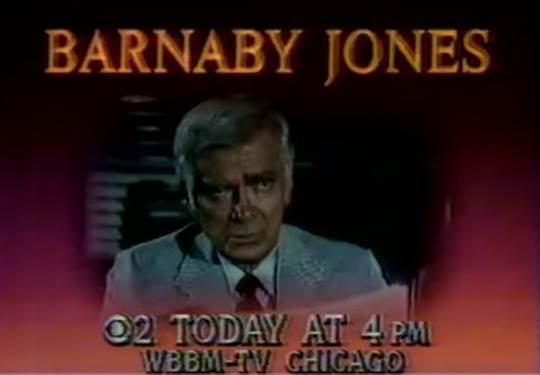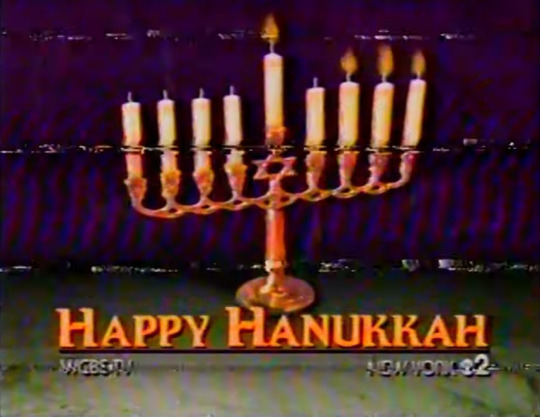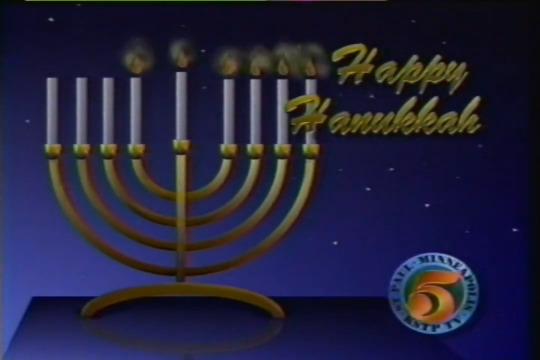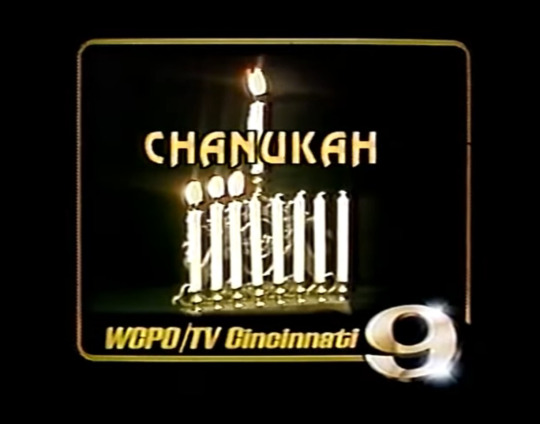#WBBM
Video
youtube
🎵Chicago House Music🎵 Throwback airchecks from FM Chicago radio stations in the 80's including WGCI, WBBM, WBMX and more with DJ's including Farley Jackmaster Funk, Mickey Mixin Oliver, Kenny Jammin Jason, Mike Hitman Wilson, Mario Smokin Diaz, Edward Get Down Crosby, Ralphie The Razz Rosario and more. Homemade house and dance mixes compiled and created in the 80's and 90's by a Chicagoan. All uploads transferred from cassette tapes to digital. by Chicago House Music
3 notes
·
View notes
Text
Laksanakan Percepatan Pembangunan Zona Intergritas Periode B06, Imigrasi Baubau Adakan Rapat Evaluasi Internal



Kepala Kantor Imigrasi Kelas II Non TPI Baubau menyelenggarakan kegiatan Evaluasi Pelaksanaan Target Kinerja B06 Tahun 2024, Senin, 27/5/2024.
Kegiatan dilaksanakan di ruang aula kantor imigrasi kelas II Non TPI Baubau.
Kegiatan ini dipimpin oleh Bapak Teguh Santoso selaku Kepala Kantor Imigrasi Kelas II Non TPI Baubau, didampingi Ketua Pembangunan Zona Integritas (ZI), Wakil Ketua ZI, dan Ketua Pokja Perubahan di 6 area perubahan berserta Tim. Kegiatan Evaluasi pembangunan Zona Integritas menuju WBK/WBBM periode B06 ini dimulai dengan menyampaikan materi pemenuhan data dukung RKT RB Pembangunan ZI Menuju WBK yang telah dilaksanakan Kantor Imigrasi Kelas II Non TPI Baubau. Kemudian dilanjutkan dengan sesi diskusi dan tanya jawab oleh Para Ketua Pokja mengenai kendala dan permasalahan yang dihadapi dalam pemenuhan data dukung tersebut. Rapat kerja tersebut dilaksanakan agar pemenuhan RKT RB periode B06 dapat berjalan dengan baik dan lancar.
0 notes
Text

1 note
·
View note
Text
No Korupsi, Clue Dari Mentan SYL Untuk Pertahankan WBK dan WBBM di Lingkup Kementan - Gosulsel
JAKARTA, GOSULSEL.COM - Menteri Pertanian, Syahrul Yasin Limpo (Mentan SYL) menyampaikan terima kasih atas pengelolaan anggaran bebas korupsi di lingkup Kementerian Pertanian selama tujuh tahun terakhir. Hal ini seperti yang terlihat dalam opini Wajar Tanpa Pengecualian atau WTP yang diberikan...
http://gosulsel.com/2023/06/22/no-korupsi-clue-dari-mentan-syl-untuk-pertahankan-wbk-dan-wbbm-di-lingkup-kementan/
#KementerianPertanian #WBBM #WBK
0 notes
Text
Don Geronimo on 99X WXLO New York | September 7 1977
Don Geronimo on 99X WXLO New York | September 7 1977
WXLO 99X New York – Don Geronimo – September 7 1977
For over 20 years, the team of Don & Mike were a force on the radio in the nation’s Capital. From December 1985 through April 11, 2008, the pair performed their zany radio show, first on the WAVA Morning Zoo on WAVA, they they took over afternoon show on 106.7 WJFK. But there was a time when Don Geronimo was more of a wacky Top 40…

View On WordPress
#B96#Chicago#Don & Mike#Don Geronimo#FM#KFI#KIIS#Mike O&039;Mera#The Don & Mike Show#WAVA#WBBM#wls#WPGC
0 notes
Text

1973
6 notes
·
View notes
Video
youtube
The Bill Cosby Show - "The Gumball Incident" + Meditation & Sign-Off - W...
0 notes
Video
youtube
WBBM Newsradio 78 Chicago
0 notes
Text

Barnaby Jones - Today at 4pm
10 notes
·
View notes
Photo








80′s/90′s Local Television Hanukkah Station IDs/Bumpers Part 4
1. WCKT-TV, Miami, Florida, 80′s
2. WCBS-TV, New York, New York, 1988
3. KSTP-TV, St. Paul/Minneapolis, Minnesota, 1991
4. WSJV-TV, Elkhart/South Bend, Indiana, 1990
5. WJBK-TV, Detroit, Michigan, 1989
6. KNBC-TV, Los Angeles, California, 1988
7. WBBM-TV, Chicago, Illinois, 1980
8. WCPO-TV, Cincinnati, Ohio, 1981
Part 1 (x)
Part 2 (x)
Part 3 (x)
1K notes
·
View notes
Video
youtube
🎵Chicago House Music🎵 Throwback airchecks from FM Chicago radio stations in the 80's including WGCI, WBBM, WBMX and more with DJ's including Farley Jackmaster Funk, Mickey Mixin Oliver, Kenny Jammin Jason, Mike Hitman Wilson, Mario Smokin Diaz, Edward Get Down Crosby, Ralphie The Razz Rosario and more. Homemade house and dance mixes compiled and created in the 80's and 90's by a Chicagoan. All uploads transferred from cassette tapes to digital. by Chicago House Music
0 notes
Text

In addition to AI, the 10 Million Names Project is employing oral histories and archived documents to help identify 10 million enslaved people in pre- and post-colonial America.
When journalist Dorothy Tucker first learned about the 10 Million Names genealogical project, it helped amplify memories of long car journeys from Chicago to “Down South” in the 1960’s, where her mother’s family owned land.
The Mississippi property purchased by her great-grandfather George Trice in 1881 was special for several reasons. First, nobody’s really sure how a formerly enslaved man was able to purchase 160 acres, but Trice came up with the $800. And every time Tucker and her family drove down to Shannon, Mississippi each summer to visit relatives, it was more than just a vacation.
“I'd wake up in the morning and have breakfast at my aunt's house. I'd go a few feet down the road and have lunch at my great-aunt's house. And then I'd play outside at my cousin's house,” says Tucker, an award-winning investigative journalist with CBS2 WBBM-TV in Chicago. “It was that way all day long. Every house was owned by a relative. I thought everybody lived like this. I thought everybody had land and stuff that was theirs.”
Tucker finally got specific details about how and why that land was purchased during the final months of her term as president of the National Association of Black Journalists. In early 2023, NABJ Board Member Paula Madison, a retired NBC Universal executive, informed the group about an offshoot of the Georgetown Memory Project, the initiative that unearthed information about the 1838 sale of enslaved Africans to fund Georgetown University. The 10 Million Names Project was created to recover the names of an estimated 10 million men, women and children of African descent who were enslaved in pre- and post-colonial America between the 1500’s and 1865. By engaging with expert genealogists, cultural organizations, and family historians both Black and white, the initiative hopes to provide more African Americans with information that only formally began to be captured for their ancestors in the 1870 United States Census.
Up until that year, enslaved Africans and their descendants were only acknowledged as the property of their owners. If their existence was noted, it was in the form of sales documents or as catalogued property in civil records. Also, the relatives of enslavers often maintain troves of information about those purchased and sold off that would otherwise be completely lost.
(This database is helping to uncover the lost ancestry of enslaved African Americans.)
Much of the work will be dependent on oral histories passed down thru generations of families, and researchers of the 10 Million Names Project also hope that more white families will aid in the search by making familial records, like letters and pages from family bibles, available to them.
Tucker, who ended her term as NABJ president during that organization’s annual conference in August, revealed at the awards banquet in Birmingham, Alabama that she’d been able to learn more about her great grandfather’s real-estate ventures, through a collaboration between NABJ and the New England Historical Genealogical Society’s American Ancestors initiative.
The 10 Million Names Project was formally launched at the convention. Tucker considers it an especially timely parting gift to her journalistic colleagues. As societal divisions along racial lines widen, hate crimes continue, and attempts to ban books and curtail African American studies programs in schools and universities increase, strengthening historical knowledge is urgently important for Black Americans, Tucker says.
“I think that the ability to tell these stories and to know them is so critically important,” she says. “When you know your personal story, then as a journalist, it gives you the perspective to dig deeper when you're doing the next story, whether it’s about the school board or about Ukraine or the next elections. You know, these stories are all tools that are really good for all of us.”
How the initiative evolved
The man who is the catalyst for the Georgetown Memory Project and 10 Million Names says he’s never really been interested in investigating his own family tree.
“To me, genealogy was sort of like butterfly collecting,” says Richard Cellini, a faculty fellow at Harvard University and founding director of the Harvard Legacy of Slavery Remembrance Program. “It’s impressive because of the amount of effort invested into it. But I never quite understood the point.”
Cellini was born in 1963 in Central Pennsylvania to a Penn State University professor and homemaker mother. His Catholic upbringing steered him to Georgetown University and an eventual decade-long law career before pivoting toward the software and technology realm. In 2015, Cellini learned that his alma mater had formed a working group to explore the sale of 272 men, woman, and children in 1838 to rescue the university from bankruptcy. As a white American of European descent, he says he did not live with or know many Black people growing up, going to school or during his legal and technology careers, so the initiative opened a window in his mind.
When Georgetown President John DeGioia invited alumni to weigh in, Cellini wrote an email asking one simple question that had nothing to do with the university. He wanted to know, “What happened to the people?”
Cellini says a senior member of the working group wrote back to say that research had concluded that all of the enslaved men, women, and children had died fairly quickly after arriving in the swamps of Louisiana where they had been transported.
“And I remember just staring at that email, even though I didn't really know much about the history of slavery or African American history, and just thinking that just doesn't make any sense,” Cellini says. Curiosity drove him to form an independent research group, funded initially through his own credit card and then from other Georgetown alumni who eagerly offered financial backing. To date, the Georgetown Memory Project has fully identified 236 of the 272 enslaved people sold by the university's leaders. Of those identified through archival records, the project has verified more than 10,000 of their direct descendants.
“The 1838 slave sale at Georgetown brought home to me, again, they were real people with real families and real names,” Cellini says. “More than 50 percent of them were children. William was the youngest, and he was six months old. And Daniel was the oldest at 80. Len was sickly, and Stephen was lame. I mean, this is all from the original documentation. From that moment on, I just couldn't get it out of my head.”
The gathering of history
The genealogists and historians connected with the project suggest that the richest vein of information may well be in the oral histories they’ve already begun gathering through hundreds of interviews. They contain fascinating stories like the ones that Kendra Field’s grandmother Odevia Brown used to tell about her African American and Native American forebears in Oklahoma. When Field was in high school, she never really liked history classes, but she always loved her grandmother’s stories.
“It wasn't until I got to college that I realized, thanks to a wonderful professor, that my grandmother's stories were history,” Field says. After the death of her father, Field began to travel back to those historically Black Oklahoma towns to explore her African American and Creek Indian heritage. Now in her career as a historian, author and professor at Tufts University, Field also has taken on the role of chief historian for 10 Million Names.
Technology, including the use of artificial intelligence programs, is allowing project investigators to do quicker, more efficient searches for information. Field says that can happen by identifying the location of plantation ledgers, advertisements, and receipts from auctions. “Particularly, there's been a lot of advancements made in optical character recognition, which allows researchers to identify names and handwritten records,” Field says.
Prior to this, a researcher had to find the document, transcribe the information, and then pivot to another database to go deeper. But with the development of other genealogical data sets such as Enslaved.org, locating individuals and making connections becomes much easier. “So that means we can move closer to that 10 million much more quickly than we would have been able to even a decade ago,” Field says. Also, the collection at the Library of Congress, “Born in Slavery: Slave Narratives from the Federal Writers' Project, 1936 to 1938” has yielded important clues from the estimated 2,300 people interviewed during that project.
(The search for lost slave ships led this diver on an extraordinary journey.)
Though identifying 10 million people who were never meant to be known as human beings may sound like a staggering task, the people behind the initiative believe it’s a totally attainable goal—even amidst all the current cultural and ideological turmoil in American society. That’s because, Cellini says, there are certain inalienable truths in this world.
“John Adams said that facts are stubborn things. You know, our Black brothers and sisters have always known their history and white people have always tried to prevent Black people from learning that history. What's new here is that white people are now trying to prevent other white people from learning this history.”
Cellini believes that Black Americans aren’t the only ones who want or need to know the full story. “It's white people who hunger for knowledge of that history, as well. It’s our duty to engage in determined resistance, to strike repeated blows for the truth. And nothing is more stubborn than facts.”
And like journalist Tucker, Cellini believes the search is infinitely for the benefit of the whole of society.
“The hard part isn't the finding,” Cellini says of the effort. “The hard part is the looking. But when we look, we find. And when we find, the whole world changes.”
#Africans#Black Lives Matter#Black Lineage#american freedmen#Black Freedmen#Black Americans#10 million enslaved Americans' names are missing from history. AI is helping identify them#10 million names project
40 notes
·
View notes
Text
Northwestern University officials announced Monday that it had reached an agreement with anti-Israel protesters that included funding for Palestinian scholarships and for Palestinian visiting faculty members.
The agreement comes five days after the pro-Palestinian demonstrators began building an encampment in the middle of Deering Meadow on the Evanston Campus.
WBBM-TV reported soon after the agreement was announced that tents were already being dismantled.
“This agreement was forged by the hard work of students and faculty working closely with members of the administration to help ensure that the violence and escalation we have seen elsewhere does not happen here at Northwestern,” said University President
6 notes
·
View notes

